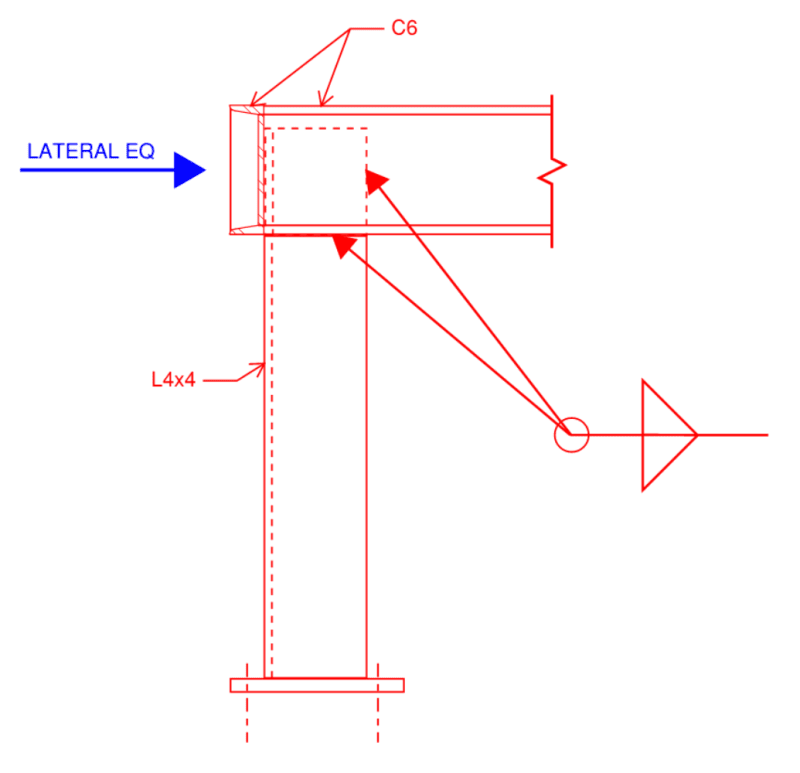I have used something similar for small access platforms in the past. Ive gotten comments before in plan review, but rationalized it since we are able to resolve the moment and achieve adequate stiffness / rigidity using this connection (Using ASCE Ch.15, Steel ordinary moment frame with R = 1 and pinned base).
The loads are very small and it works fine from a capacity/stiffness perspective. If I had never received comments on it, I would probably use it without second guessing. But I am curious if anyone here feels differently - if you'd be uncomfortable using this connection in SDC D as an AISC 360 moment-resisting connection.

The loads are very small and it works fine from a capacity/stiffness perspective. If I had never received comments on it, I would probably use it without second guessing. But I am curious if anyone here feels differently - if you'd be uncomfortable using this connection in SDC D as an AISC 360 moment-resisting connection.


